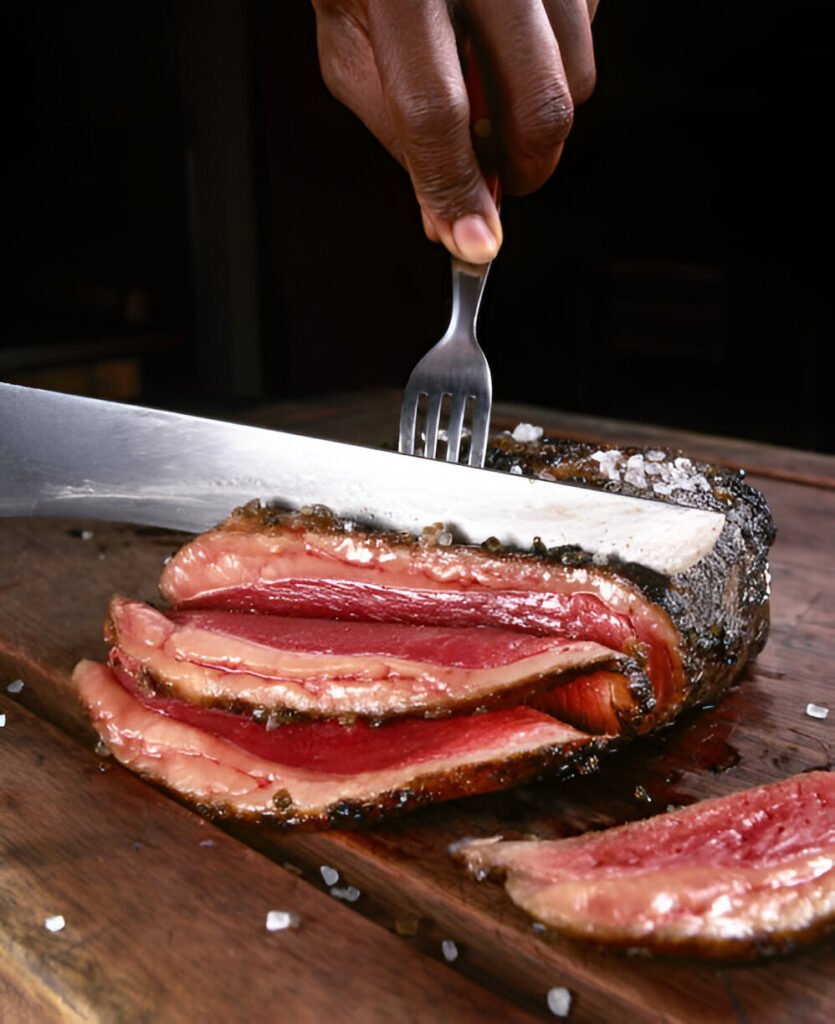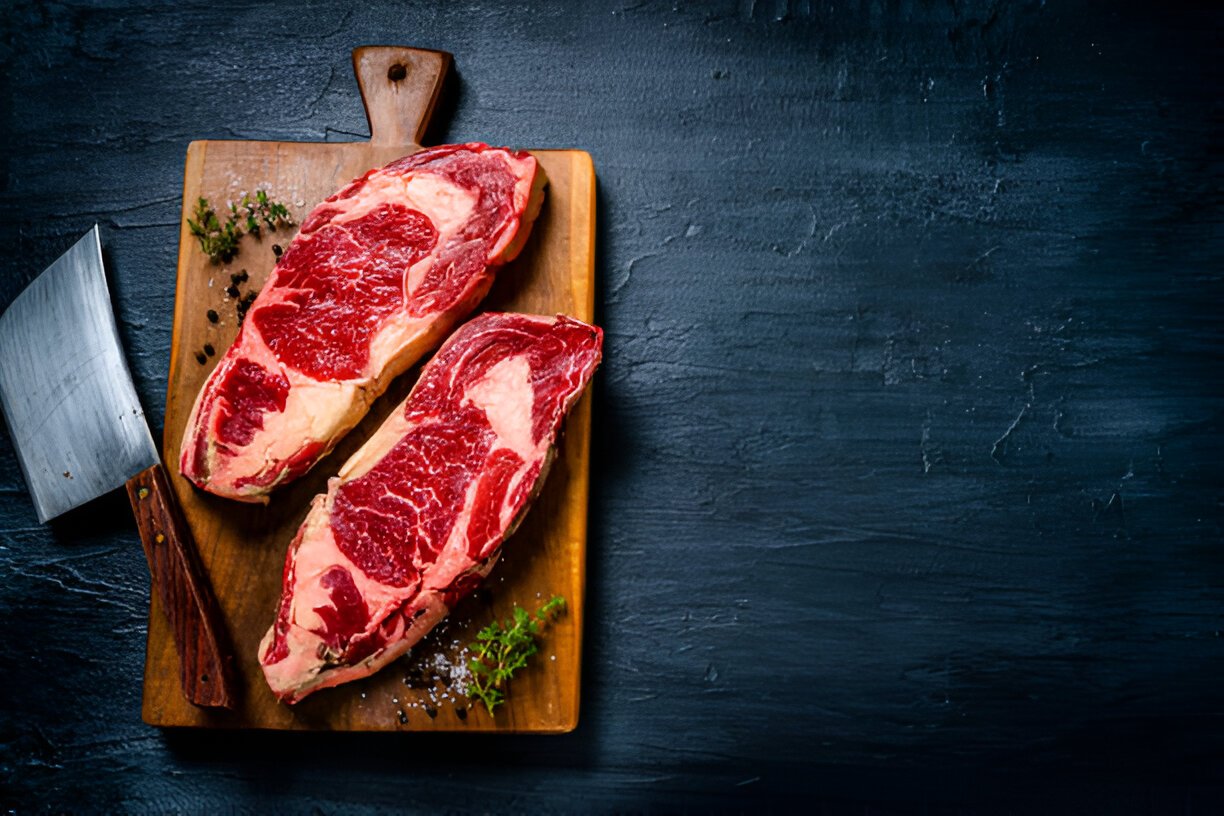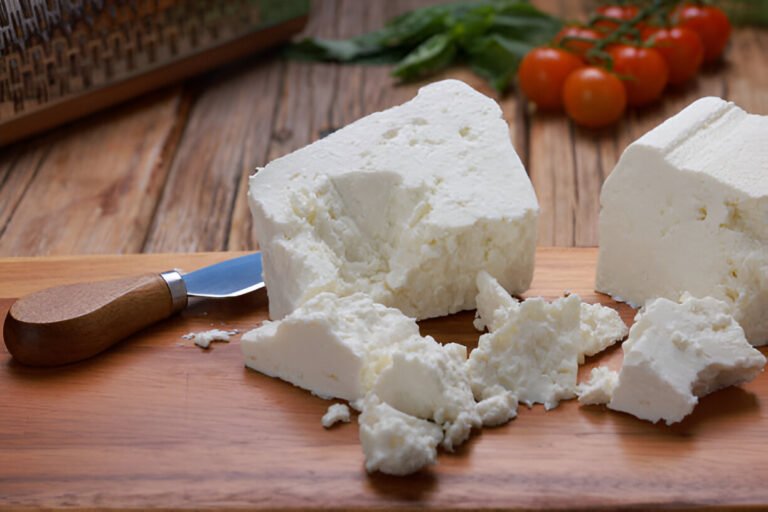Can You Cut Meat on a Wooden Cutting Board? Safety Tips & Best Practices
Wooden cutting boards are a must-have in any kitchen. They’re one of the most popular types available.
While wooden cutting boards are excellent for slicing vegetables and fruits, you may wonder if cutting meat on them is safe.
Let us see the pros and cons of cutting meat on a wooden cutting board and provide tips and tricks for safely doing it.
Is It Okay To Cut Meat On A Wooden Cutting Board?
Yes, it is okay to cut meat on a wooden cutting board.
Wooden cutting boards are popular for cutting meat. They absorb shock and vibration, so they help keep your knives sharp. They also protect your countertops from scratches.
They are also easy to clean and sanitize, making them a safe option for food preparation. When cutting meat on a wooden board, it is important to take proper care of the board.
Clean it right after use. Also, oil it with mineral oil now and then. This helps prevent drying and cracking.
Additionally, it is important to avoid using harsh cleaning products on the board, as the chemicals can damage the wood.
With proper care, a wooden cutting board can last many years and provide a safe and effective surface for cutting meat.
The Myths Surrounding Wooden Cutting Boards

Wooden cutting boards often get a bad rap when it comes to food safety, especially with raw meat. Many believe that wood absorbs bacteria and harbors germs, making it unsafe for food prep. Research shows some types of wood stop bacteria from growing. This is different from plastic boards, which can hold bacteria in knife grooves.
Wood vs. Plastic: Which is Safer?
| Feature | Wooden Cutting Board | Plastic Cutting Board |
| Bacteria Growth | Naturally antimicrobial properties | Can trap bacteria in knife cuts |
| Durability | Long-lasting with proper care | Can become deeply scratched |
| Maintenance | Requires oiling and hand washing | Easier to sanitize in a dishwasher |
The idea that wooden boards are unsafe probably started from worries about moisture and cleaning issues. Wood needs more care, but studies show bacteria die faster on wood than on plastic. By cleaning and maintaining your wooden board properly, you can safely use it for years to come.
Can You Cut Meat on a Plastic Cutting Board?
Cutting meat on a plastic cutting board can be an easy and convenient way to prepare meals. Plastic cutting boards don’t absorb liquids. This makes them less likely to hold bacteria. They are also easier to clean than wooden boards.
Plastic cutting boards are also less porous and, therefore, less likely to cause cross-contamination when cutting different types of food.
Additionally, plastic cutting boards are more lightweight and can be used on any countertop or surface.
Plastic cutting boards can chip and warp over time. So, replace them more often than wooden boards.
Wood vs Plastic Cutting Board For Meat
Wooden cutting boards [1] are generally the better choice for cutting meat.
Wood naturally fights bacteria, stopping their growth. This makes it a safer option for cutting meat.
Wood also absorbs the juices from meat, preventing them from spreading around the kitchen.
“ Not eating meat is a decision, eating meat is an instinct. “
– Denis Leary, American Actor
On the other hand, plastic cutting boards can be more prone to harboring bacteria, as they are not as porous as wood.
Plastic cutting boards can easily get scratched and nicked. This can lead to bacteria growing on them.
| Check out: What is the Most Expensive Beef Cut? |
How To Sanitize Wood Cutting Board
To sanitize a wood cutting board, first, clean the cutting board with warm water and soap. Then use a paper towel or a clean cloth to wipe the board with one tablespoon of chlorine bleach and 1 gallon of water.
Rinse off the bleach solution with warm water and let the board air dry. If the board has deep grooves, use a brush to clean the board and rinse thoroughly.
Afterward, use a food-safe mineral oil to keep the board from cracking.
Can You Cut Meat & Vegetables On The Same Board?
Yes, you can cut meat and vegetables on the same board. However, it is important to take steps to prevent cross-contamination. Before cutting any vegetables, clean the cutting board with hot, soapy water.
Then, use a different cutting board for the meat and clean it again afterward.
Using different cutting boards and washing them between tasks can stop bacteria from spreading between meat and vegetables.
| Check out: How To Cut Ribeye Steak Against The Grain |
Do Chefs Use Wooden or Plastic Cutting Boards?
Chefs use wooden and plastic cutting boards for different tasks in the kitchen.
We like wooden cutting boards because they fight bacteria. They also help keep knives sharp when used gently.
Plastic cutting boards are preferred for their ease of cleaning and resistance to absorbing odors and flavors.
Most chefs have both types of boards in their kitchen and use them for different tasks.
FAQs on Cutting Meat on a Wooden Cutting Board
Can you use a plastic cutting board for raw meat?
No, using plastic cutting boards for raw meat is not recommended. Bacteria from raw meat can get trapped in the grooves of a plastic cutting board and contaminate other foods. Using separate cutting boards for raw meat, vegetables, and cooked food is best.
How to clean wood cutting boards after raw meat?
Thoroughly clean the wood cutting board with hot, soapy water and a scrub brush to remove any bacteria.
Disinfect the cutting board with one tablespoon of bleach per gallon of water and let it stand for several minutes before rinsing it off.
Can you cut raw chicken on a plastic cutting board?
Cutting raw chicken on a plastic cutting board is not a good idea. It can let bacteria spread and raise the risk of foodborne illness.
Use a wooden or nonporous cutting board. A glass or plastic board labeled for raw meat, poultry, and seafood works well too.
Final Thoughts
In conclusion, wooden cutting boards are excellent for cutting meat as long as you take care of them properly.
They are durable, affordable, and simple to clean. They don’t dull knives like plastic cutting boards. Plus, they don’t trap bacteria like plastic boards do.
A wooden cutting board can last a lifetime with proper care. It offers a safe and effective way to cut and prepare your favorite meats.
Reference:
- https://www.nytimes.com/wirecutter/reviews/best-cutting-board/







